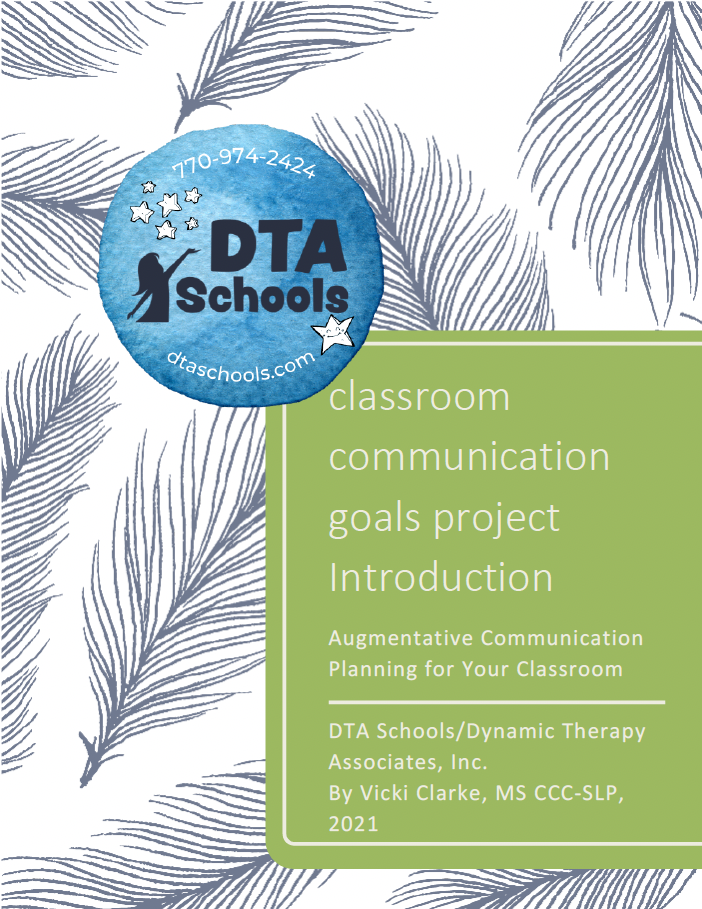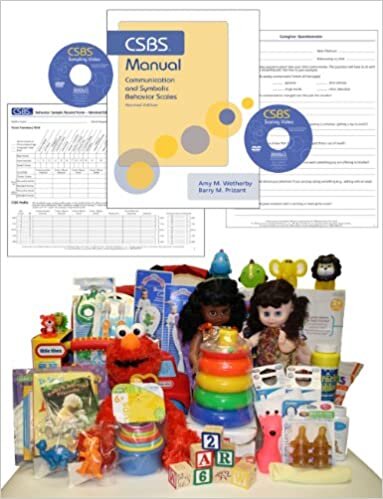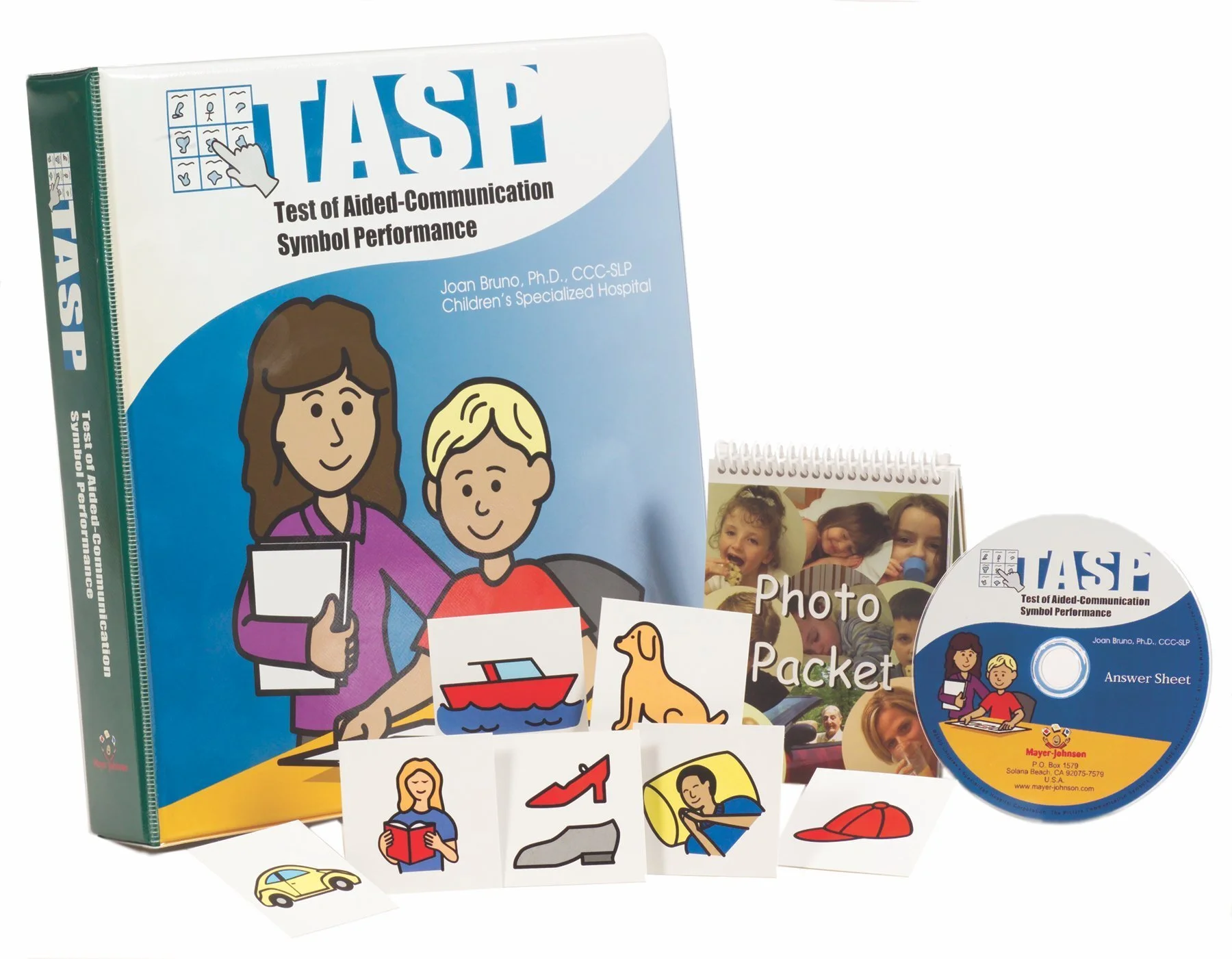Pediatric Evaluation Tools
This is a curated list of tools and resources geared toward evaluating children with complex communication needs from birth to 18 years old. We encourage you to explore and judge for yourself which to add to your toolbox.
Free tools and resources are listed in alphabetical order first, followed by paid tools and resources. Be sure to explore both! Have a favorite tool or resource for evaluating children with complex communication needs that we missed? Send us an email to share!
Please note: This is not an exhaustive list of all possible evaluation tools. Inclusion on this list is not an endorsement or recommendation.
This information was current at the time it was posted. If you spot a needed update, please send us an email at info@nwacs.info. Thank you for helping us keep this information up-to-date and useful!
Free Evaluation Tools and Resources
AAC Assessment Planning Tool (APT)
The APT is a framework for choosing AAC assessment tools based on the individual’s current level of communicative independence by Grant Wood AEA. The APT suggests many of the assessments listed on this page.
For more information read our New Discoveries post
Also check this slide deck from Grant Wood Area Education Agency AAC Resource Team
Age-Appropriate Transition Assessment Planning Guide
This guide from OCALI introduces the planning process for transition assessment.
Assessment of Learning Process (ALP) for AAC
The ALP for AAC is a tool to understand progression with touch, switch, head tracking and eye tracking in AAC Teaching. The ALP for AAC breaks down the access method learning process into 3 broad stages with 8 specific phases.
Checklist of Communicative Functions and Means
The Checklist of Communicative Functions and Means helps to determine how and when an individual communicates.
Classroom Communication Profile
A tool for examining communication accessibility of classrooms.
Classroom Communication Project
A collection of tools designed to help teachers and therapists assess, develop goals, how progress, and implement AAC and communication skills in the academic environment. Includes a revised Classroom Communication Goals Grid (similar to the DAGG-2).
Communication Environment Checklist
The Communication Environment Checklist helps evaluate environments for communication accessibility. It uses aspects identified by Von Techner & Grove (2003), Burkhardt et al (2012) and Porter (2013).
Click here to view, or click the button below to make a copy to use.
Communication Matrix
The Communication Matrix is a questionnaire for teams to discuss the communication status, progress, and unique needs of anyone functioning at the early stages of communication or using forms of communication other than speaking or writing. It results in a visual representation of skills and can be used to track progress over time.
Also check out Using the Communication Matrix Creatively by Karen Natoci on the USSAAC blog.
Note: Starting in 2021 there is a small fee after your first 5 uses in a 12-month period. See more about the fee structure here.
Communication Sampling & Analysis (CSA)
The CSA is a tool for sampling and analyzing communication behavior in natural interactions. It is designed for infants, toddlers, and children with multiple physical, sensory, speech, and cognitive/linguistic challenges.
Note: The CSA also offers a yearly subscription
Communication Signal Inventory (CSI)
The CSI is an inventory of a child’s communicative signals, what they mean, and how communication partners should respond. Click the Learn More button to read a powerpoint on communication signal inventories by Dr. Cynthia Cress.
Also see this resource on creating a Personal Communication Dictionary or Personal Gesture Dictionary from Oxford Health NHS Foundation Trust
Communication Supports Inventory - Children & Youth (CSI-CY)
The CSI-CY is tool to help professionals working with students with complex communication needs make educational plans that are comprehensive enough to capture their strengths and restrictions. This tool is intended to function as a guide to organize a team’s understanding of the impact of a student’s communication strengths and limitations on their participation at school and home.
Continuum of Language Expression (COLE)
The COLE is a tool to evaluate early language development. It is an informal tool intended to be filled out as a team based on observations of the individual. The COLE can be used to track progress over time.
For more information about the COLE listen to this Talking With Tech podcast episode
Also see Piktochart of COLE
Dynamic AAC Goals Grid 3 (DAGG-3)
The DAGG-3 is a tool that provides a systematic means to identify a person’s current communication abilities and guides the selection of appropriate goals. It can be used to track progress over time. Activities for each goal are included as well as a plath for advancing skills.
Dynamic Assessment of Nonsymbolic Communication
The Dynamic Assessment of Nonsymbolic Communication is an informal assessment for individuals who communicate through nonsymbolic means. See appendices in article/manual.
Early Development of Emotional Competence (EDEC)
The EDEC is an assessment tool for children with complex communication needs (CCNs).
Related: Early Development of Emotional Competence Profile (EDEC-P)
Family Impact of Assistive Technology Scale for Augmentative and Alternative Communication (FIATS-AAC)
The FIATS-AAC is a parent-report questionnaire designed to detect functional change associated with augmentative and alternative communication (AAC) interventions for children and youth, ages 3 to 18 years, and their families. It has 13 dimensions to measure overall and domain-specific functioning associated with AAC system use.
Feature Matching Checklist
The Feature Matching Checklist helps determine the features needed in an AAC system. The checklist gathers information about the individual’s sensory, motor, and communication needs.
Check the Technology & Language Center Inc. for a free download from the Links & Downloads tab
Index of Augmented Speech Comprehensibility in Children (I-ASSC)
The I-ASSC is a non‐standardized clinical measure to determine single‐word speech comprehensibility in children. This tool can be useful in resolving team conflicts about speech versus alternative strategies.
Direct Link to Document Download (zipped file)
A digital (Google Slide) version is available on the Free Resources page of Technology & Language Center, PC
Matching Person and Technology (MPT) Assessment
The Matching Person and Technology process is a person-centered resource. It can be used to foster user engagement and guide a team in the selection of the most appropriate assistive technology or support solution.
Pragmatics Profile for People who use AAC
The Pragmatics Profile for People Who Use AAC is a tool to collect information about a person’s reasons to communicate and their ability to participate in interactions and describe a person’s functional communication skills.
More information available on the AAC Language Lab website HERE
QUAD Profile: Checklists for Profiling Language Samples
The QUAD is an analysis tool that allows you to take a sample of language and compare it against a set of checklists. The checklists look at four levels of language: vocabulary, morphology, syntax, function.
Also available on the AAC Language Lab website HERE
Responsiveness of an AAC Outcome Measure: Clinical Case Report Form
The Responsiveness of an AAC Outcome Measure is form to record a client’s communication competencies, training history, and AAC technologies to track changes at three times over the first 12 weeks a client has an AAC system.
The Bridge Assessment
The Bridge is an early literacy and language assessment framework based on observation and portfolio development/analysis.
The Bridge School tools
The Bridge School offers a variety of links to useful tools for documenting present levels of performance (and assessment). Be sure to take a look at the All About Me Inventory!
The SETT Framework
The SETT Framework is a tool that supports teams in gathering and organizing information for a thorough assistive technology assessment and guides decision-making for intervention.
The SETT Framework model was developed by Joy Zabala
Tool for Analysis of Language and Communication (TALC)
The TALC is a language sampling tool for multimodal communicators.
download from Technology & Language Center Inc. (from the Links & Downloads tab)
Vicki Clarke resources
Vicki Clarke (SLP) has written several informative articles on the PrAACtical AAC website regarding AAC assessments.
Wisconsin Assistive Technology Initiative (WATI)
WATI offers a variety of resources, including the 2017 Assistive Technology Assessment package.
Paid Evaluation Tools and Resources
AAC Evaluation Genie (iOS app)
The AAC Evaluation Genie is an informal diagnostic tool that is intended to assist with identifying skill areas that relate specifically to the language representation methods commonly found on augmentative communication systems. There are 13 subtests that can be administered with screening options available for each subtest.
AAC Language Charts
Available as part of the subscription (currently $19.95 per year), AAC Language Lab resources includes charts for parts of speech, pragmatics, morphology, AAC language stages, and sentence types. Also check out their Evaluation Tool tab.
Achieving Communication Competence
The Achieving Communication Competence assessment details a three-step process for creating an effective plan for people with severe communication disabilities.
Augmentative & Alternative Communication Profile: A Continuum of Learning (AACP)
The AACP allows you to assess communication skills and design intervention for the ever-changing needs of people who use AAC systems. It both measures skills and guides intervention.
C.O.D.E.S. Framework
The C.O.D.E.S. Framework has been developed to help monitor progress of an individual using an AAC system.
Communication and Symbolic Behavior Scales (CSBS)
The CSBS consists of 22 communication and symbolic rating scales grouped into seven clusters. This assessment is designed to be used with infants and toddlers whose functional communication age is between 6 and 24 months and for children up to 72 months who exhibit atypical development.
Also check out:
Early Functional Communication Profile (EFCP)
The EFCP assesses pivotal preverbal communication skills that children need to develop functional communication. Intended for use with children aged 2 – 10 years.
Evaluating Acquired Skills in Communication-3 (EASIC-3)
The EASIC-3 is a five-level inventory developed for use with children who are developmentally disabled, have autism, or have moderate to severe cognitive and language disorders. It provides assessment items in the areas of prelinguistic skills, semantics, syntax, morphology, and pragmatics. For students functioning under the language and cognitive levels of the average 6-year-old.
Every Move Counts, Clicks and Chats (EMC3)
The EMC3 is a sensory based approach to communication and assistive technology for individuals with significant sensory motor differences, developmental differences and autism.
Functional Communication Profile - Revised (FCP-R)
The FCP-R yields an overall inventory of the individual's communication abilities, mode of communication (e.g. verbal, sign, nonverbal, augmentative),and degree of independence. The FCP-R is appropriate for individuals who range between mild and profound deficits.
Hear Me Into Voice: An AAC Protocol for Children with Complex Communication Profiles
This protocol compiles information about the child’s preferences, feelings, social graces, vocabulary, and tools to then be tied to communication and participation.
The protocol is published in the book Augmentative and Assistive Communication With Children: A Protocol and Intervention Plan to Support Children with Complex Communication Profiles by Lesley Mayne and Sharon Rogers (2020).
MacArthur-Bates CDI
The MacArthur-Bates CDI is a set of parent-report vocabulary inventories. These inventories are intended for children aged 8–37 months, but may also be used with older children who have developmental delays.
More information can be found here (including information about adaptations for a number of other languages.)
A Model of Observational Screening for the Analysis of Interaction and Communication (MOSAIC)
The MOSAIC was developed in order to provide a structured approach to observing the communication skills of adults and children with an intellectual disability.
The Roadmap of Communication Competence (ROCC)
The ROCC is a rubric tool to assess, plan, and evaluate communication outcomes.
single license purchase or yearly subscriptions for groups
Social Networks
The Social Networks is an assessment and intervention planning tool designed to help individuals, their families and professionals determine the most appropriate technologies and communication strategies for people with complex communication needs.
Test of Aided-Communication Symbol Performance (TASP)
The TASP provides a starting point for designing or selecting an appropriate AAC device page set. TASP uses results to design communication boards and establish appropriate AAC intervention goals and strategies targeting symbolic and syntactic development.
Test of Early Communication and Emerging Language (TECEL)
The TECEL assesses the earliest communication behaviors and emerging language abilities in infants and toddlers up to 24 months old.
Triple C
The Triple C is a valid and reliable tool that makes it possible to assess skills that are observable, focus on functional skills and assess early communication skills. It is designed to use with teenagers or adults with little or no speech.














































